|
Ring-necked Duck Aythya collaris Pato del Medio, |
 |
|
Male - Photo: M. Donahue
|
|
Ring-necked Duck Aythya collaris Pato del Medio, |
 |
|
Male - Photo: M. Donahue
|
|
IDENTIFICATION: A small diving duck with distinctive white bands on the bill. The ring on the neck is not easily seen in the field. The male has a dark back, head and breast with a vertical white stripe just behind the breast. The female is brown with a light eye ring. Length: 43 cm.; average weights in one winter study: males 768 g., females 686 g. VOICE: Makes a low-pitched growl when alarmed. Not as vocal as many duck species. The only sound most people ever hear this species make is the noise the wings make as the bird takes off. Audio (M. Oberle). HABITAT: In winter prefers freshwater lakes, ponds, and flooded fields with submerged vegetation. HABITS: Dives to feed on vegetation and aquatic insects and other invertebrates within 1.5 meters of the water’s surface. Pairs start to form before the northern migration in April. It breeds in marshes and swamps in forested areas north of the Great Plains. The female builds a nest in or near flooded vegetation. She typically lays 7-9 eggs, and incubates them for an average of 26 days while the male stands guard nearby. As with other ducks, the young leave the nest within a day of hatching. For the first weeks of life, the young feed primarily on insects and other invertebrates which provide a rich source of protein. The female remains with the young until they fledge 49-56 days after hatching. Ring-necked Ducks that breed in central and eastern North America tend to winter in the southeastern States and the Caribbean. One bird banded in New York State was recovered in Puerto Rico. STATUS AND CONSERVATION: An uncommon, winter visitor to Puerto Rico. The exact population size is not known since the species breeds in forested areas at higher latitudes that are difficult to census. The population is thought to be stable despite hunting. As many as 513,000 Ring-necked Ducks have been shot in one hunting season in North America. The species expanded its breeding range east of the Great Lakes in the middle of the 20th Century and more recently into Alaska, at a time when many other duck species have declined. This duck was a common victim of lead poisoning from eating lead shot in sediment. Although lead shot was no longer permitted in Canada after 1991 and the USA after 1997, diving ducks still dig up and eat shot deposited before the ban took effect. As in humans, young ducks absorb lead more efficiently than adults, and are thus particularly susceptible to lead poisoning. RANGE: Breeds in North America from Newfoundland through the Great Lakes region to central Alaska. It winters in the western and southern USA, south through Mexico, and in the Greater Antilles. In Puerto Rico, a regular location to see this species in Puerto Rico is at the Humacao Nature Reserve. TAXONOMY: ANSERIFORMES; ANATIDAE; Anatinae |
|
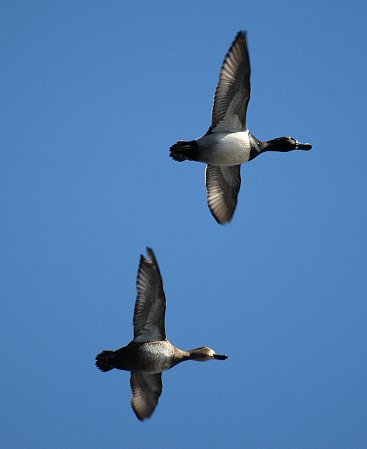 |
|
Photo: G. Beaton
|
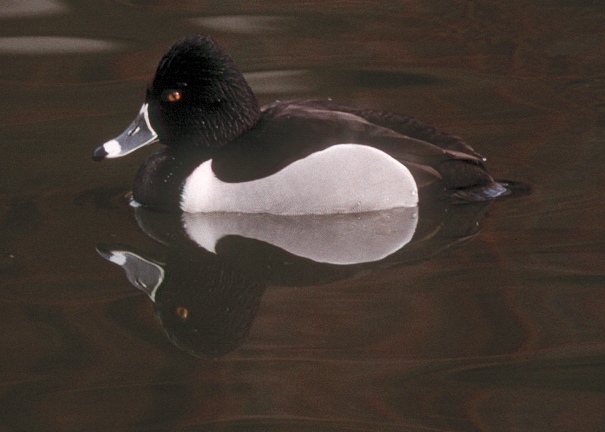 |
|
|
Male - Photo: M. Oberle
|
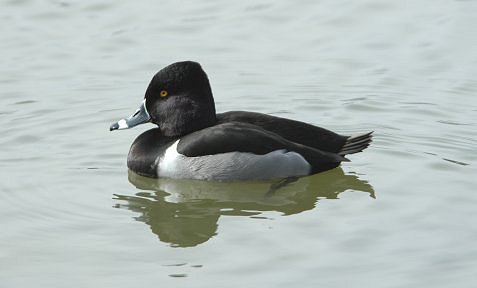 |
|
Photo: G. Beaton
|
 |
|
Culebra, 7 February 2003 - Photo: H. Golet
|
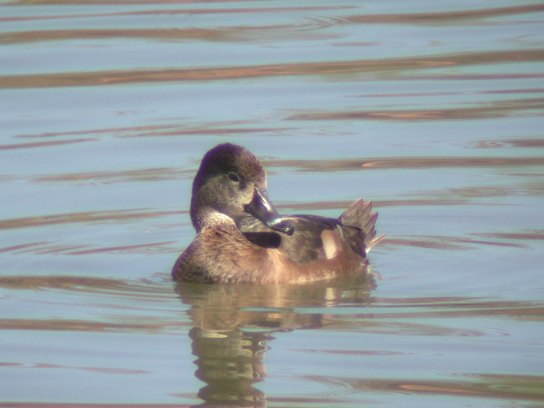 |
|
Culebra, 7 February 2003 - Photo: H. Golet
|
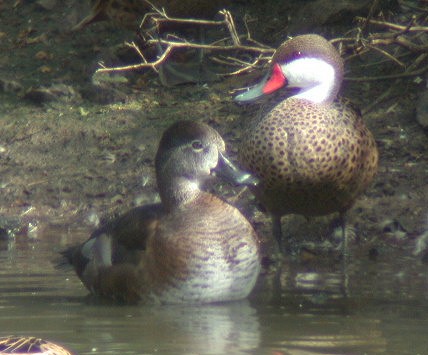 |
|
With a White-cheeked Pintail,
Culebra, 7 February 2003 - Photo: H. Golet
|
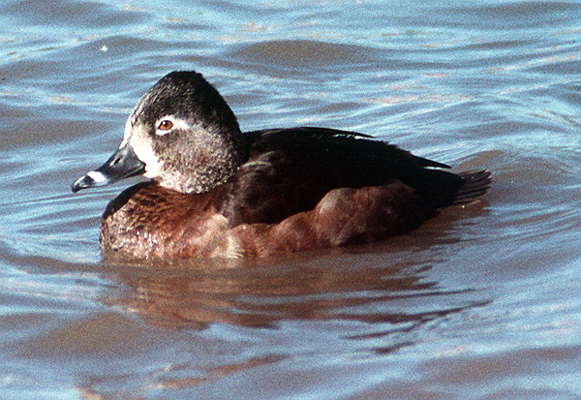 |
|
|
Female - Photo: G. Beaton
|
|
References Bent, A.C. 1923. Life histories of North American wild fowl, part I. Smithsonian Instit. U.S. National Museum Bull. 126. (Reprinted by Dover Press, NY, 1962). del Hoyo, J., A. Elliott, and J. Sargatal, eds. 1992. Handbook of Birds of the World, Vol. 1. Ostrich to ducks. Lynx Edicions, Barcelona. Ehrlich, P.R., D.S. Dobkin, and D. Wheye. 1988. The birder’s handbook: a field guide to the natural history of North American birds. Simon and Schuster/Fireside, NY. Hohman, W.L. and R.T. Eberhardt. 1998. Ring-necked Duck (Aythya collaris). No. 329 in The birds of North America (A. Poole and F. Gill, eds.). The Birds of North America, Inc., Philadelphia, PA. Madge, S. and H. Burn. 1988. Wildfowl: an identification guide to the ducks, geese, and swans of the world. C. Helm, London. Ortiz Rosas, P. 1981. Guía de cazador: aves de caza y especies protegidas. Depto. de Recursos Naturales, San Juan, PR. Raffaele, H.A. 1989. A guide to the birds of Puerto Rico and the Virgin Islands. Princeton. Raffaele, H.A. 1989. Una guía a las aves de Puerto Rico y las Islas Vírgenes. Publishing Resources, Inc., Santurce, PR. Raffaele, H.A., J.W. Wiley, O.H. Garrido, A.R. Keith, and J.I. Raffaele. 1998. Guide to the birds of the West Indies. Princeton. Ring-necked Duck, Spanish text Next related species in taxonomic order Previous related species in taxonomic order |
|